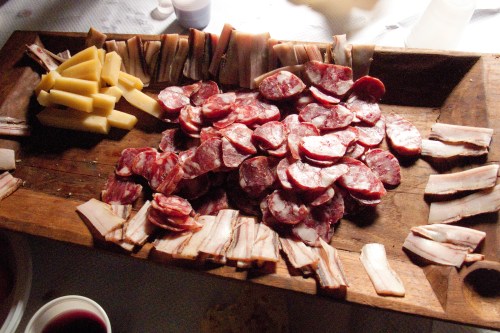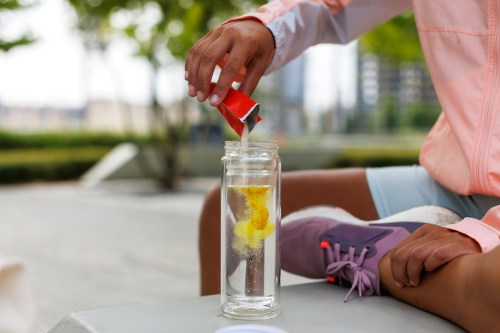Do You Really Need To Eat a Low-Histamine Diet?
Experts warn these inflammatory claims against histamines may not be what they seem.

Let's be real: TikTok and Instagram have turned just about every food trend into a health quick-fix, and the low histamine diet is the latest to go viral. From chronic bloating to unexplained hives, influencers claim that cutting out histamine-rich foods—like aged cheese, wine, and fermented foods—is the secret to feeling better. But…what exactly are histamines, and why are people suddenly blaming them for everything from inflammation to anxiety?
To get the facts straight, we spoke with a board-certified allergist and immunologist and a registered dietitian to unpack how histamines function in our bodies, why some people may be sensitive to them, and whether eating a low-histamine diet is truly necessary—or just another TikTok health fad.
Experts in This Article:
- Marlee Hamilton, registered dietitian for Ignite Nutrition.
- Dr. Purvi Parikh, a board-certified allergist and immunologist with the Allergy and Asthma Network
What are histamines?
According to Dr. Parikh, board-certified allergist and immunologist with the Allergy and Asthma Network, histamine is a chemical that gets released when you have an allergic reaction1. "When the body releases [histamine], it activates different parts of your immune system, which causes the symptoms associated with an allergic reaction," she explains.
But that's not all. According to Hamilton, registered dietitian for Ignite Nutrition, histamines not only help fight infections and trigger allergic reactions, but can also stimulate stomach acid production2 and act as neurotransmitters3 (chemical messengers to the brain).
While histamines are a totally natural and normal part of how the body functions, Hamilton explains that some people react negatively to them because their body has a hard time breaking them down. This leads to higher levels of histamine building up in the body, which can cause "itchiness, hives, headaches, digestive issues, and congestion," says Hamilton.
Hamilton goes on to say that one of the reasons histamines may build up in the body is because of low levels of diamine oxidase4 (DAO). This enzyme helps break histamines down, so if there's not enough of it, histamines build up in the body. "Other people react negatively to histamines because they have overactive mast cells (a type of immune cell) or other immune-type reactions like seasonal allergies that fill their 'histamine bucket,' leaving less room for dietary histamine,” she says.
While histamine is naturally found in many different foods, Hamilton explains that histamine levels tend to increase as foods age or ferment: "This means leftovers, aged meats, fermented foods, and certain produce are more likely to cause symptoms." She adds that proper food storage is key, as freezing foods slows histamine production more effectively than refrigeration.
Here are some other foods that are naturally high in histamines, according to Hamilton:
- Cured meats
- Smoked fish
- Aged cheeses
- Kombucha
- Alcohol
- Eggplant
- Spinach
- Tomatoes
- Fermented dairy products (like yogurt and kefir)
- Fermented soy products (like miso and soy sauce)
- Shellfish
Hamilton adds that some foods can block the activity of DAO, the enzyme responsible for breaking down histamines. Alcohol and black or green tea are the main culprits, and can cause histamine to build up over time.
Do you really need to eat a low-histamine diet?
According to Dr. Parikh, people who experience hives (urticaria5), chronic autoimmune diseases, allergies, asthma, mast cell activation syndrome6 (MCAS) or mastocytosis may benefit from a low-histamine diet. However, she adds that there is limited scientific research suggesting that a low-histamine diet improves these conditions, but anecdotally, patients have reported feeling better. She notes that this may be due to reduced levels of inflammation in the body.
"One additional area we've seen the low histamine diet become popular is with those who have long COVID," says Hamilton. She notes that this is primarily due to the similar cluster of symptoms seen in both long COVID and MCAS. "It's been hypothesized that the systemic inflammation seen in long COVID could be driven by mast cell activation7," she explains. While the research regarding the link is still unclear, she says that in practice, she does see that some patients with long COVID benefit from reducing high histamine foods in their diets.
Overall, while the low histamine diet may be beneficial in certain cases, it's best to work with a healthcare provider who can help you determine the best plan for managing your symptoms.
14 foods that are low in histamines
"Histamine intolerance works like a bucket," explains Hamilton, "and while small amounts may be tolerated, excess can lead to symptoms." She adds that the goal isn't to eliminate histamines entirely, but to reduce buildup and manage reactions. "Rather than completely avoiding histamine-containing foods, I typically suggest starting by focusing on food preparation, storage, and reducing the most obvious sources of histamines (such as aged and fermented foods)." Cooking at home and freezing leftovers immediately can help minimize histamine build-up.
If you do need to follow a low-histamine diet, here are some low-histamine foods that Hamilton suggests including in your diet:
- Fresh meat
- Fresh poultry
- Fresh fish (frozen immediately after purchase)
- Eggs
- Zucchini
- Carrots
- Leafy greens (except spinach)
- Apples
- Pears
- Blueberries
- Rice
- Quinoa
- Whole wheat bread
- Oats
However, while you could follow a low-histamine diet on your own, Hamilton suggests working with a registered dietitian to ensure you're getting all the nutrients you need and reduce the risk of developing disordered eating patterns. She also recommends stopping the low histamine diet if you don't see any improvement in your symptoms within three to four weeks.
Plus, Hamilton notes that it's important to be mindful when eliminating high-histamine fermented foods. "Fermented foods like yogurt, kefir, and kimchi, provide probiotics that promote gut health, aid digestion, and enhance immune function," she explains. It's crucial to find a middle ground and focus on strategies that support both symptom management and long-term gut health, she adds.
The bottom line
"Unfortunately, like many diet trends, the low-histamine diet is often overgeneralized and exaggerated on social media," says Hamilton. "It's not a cure-all for chronic inflammation—a term that's often poorly defined and not a true diagnosis," she adds. While it can be helpful for people with histamine intolerance or mast cell-related disorders, it's not necessary for everyone, and Hamilton cautions that overly restrictive diets can lead to unnecessary food fear and nutritional deficiencies.
If you're experiencing symptoms that you think might be linked to histamines, it's best to speak with a registered dietitian or your healthcare provider. They can help you figure out what's really going on and whether a low-histamine diet is the right fit for you.
- Patel RH, Mohiuddin SS. Biochemistry, Histamine. [Updated 2023 May 1]. In: StatPearls [Internet]. Treasure Island (FL): StatPearls Publishing; 2025 Jan-. Available from: https://www.ncbi.nlm.nih.gov/books/NBK557790/ ↩︎
- Barocelli, Elisabetta, and Vigilio Ballabeni. "Histamine in the Control of Gastric Acid Secretion: A Topic Review." Pharmacological Research, vol. 47, no. 4, 2003, pp. 299-304, https://doi.org/10.1016/S1043-6618(03)00009-4. Accessed 8 Apr. 2025. ↩︎
- Passani, Maria B., et al. "Histamine in the Brain: Beyond Sleep and Memory." Biochemical Pharmacology, vol. 73, no. 8, 2007, pp. 1113-1122, https://doi.org/10.1016/j.bcp.2006.12.002. Accessed 8 Apr. 2025. ↩︎
- Tan, Zhaowang, et al. "Advances in the Clinical Application of Histamine and Diamine Oxidase (DAO) Activity: A Review." Catalysts, vol. 13, no. 1, 2023, p. 48, https://doi.org/10.3390/catal13010048. Accessed 8 Apr. 2025. ↩︎
- Wagner, N., et al. "A Popular Myth – Low-histamine Diet Improves Chronic Spontaneous Urticaria – Fact or Fiction?" Journal of the European Academy of Dermatology and Venereology, vol. 31, no. 4, 2017, pp. 650-655, https://doi.org/10.1111/jdv.13966. Accessed 8 Apr. 2025. ↩︎
- Quinn, Alexandra M. "Complex Presentations, Identification and Treatment of Mast Cell Activation Syndrome and Associated Conditions: A Case Report." Integrative Medicine: A Clinician's Journal, vol. 22, no. 4, 2023, p. 36, https://pmc.ncbi.nlm.nih.gov/articles/PMC10519234/. Accessed 8 Apr. 2025. ↩︎
- Salvucci, Fabrizio, et al. "Antihistamines Improve Cardiovascular Manifestations and Other Symptoms of Long-COVID Attributed to Mast Cell Activation." Frontiers in Cardiovascular Medicine, vol. 10, 2023, p. 1202696, https://doi.org/10.3389/fcvm.2023.1202696. Accessed 8 Apr. 2025. ↩︎
Sign Up for Our Daily Newsletter
Get all the latest in wellness, trends, food, fitness, beauty, and more delivered right to your inbox.
Got it, you've been added to our email list.










